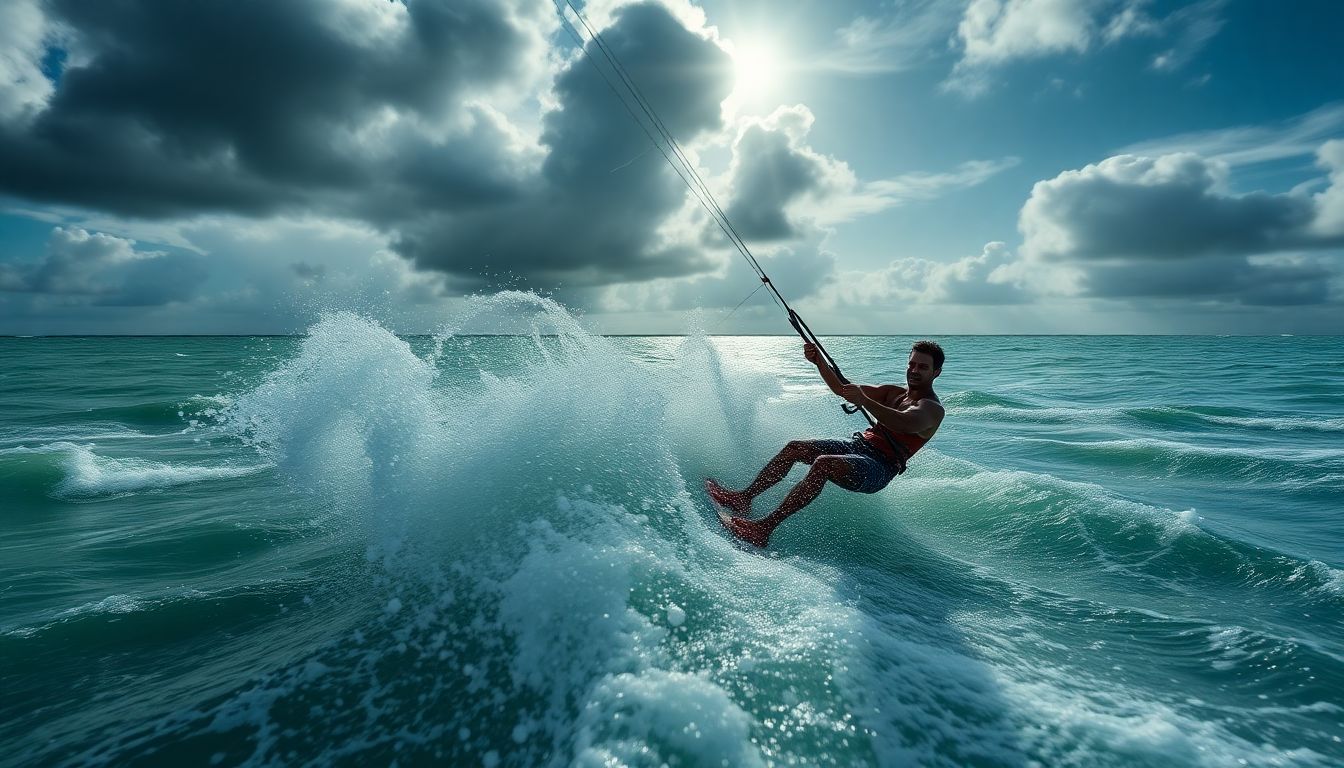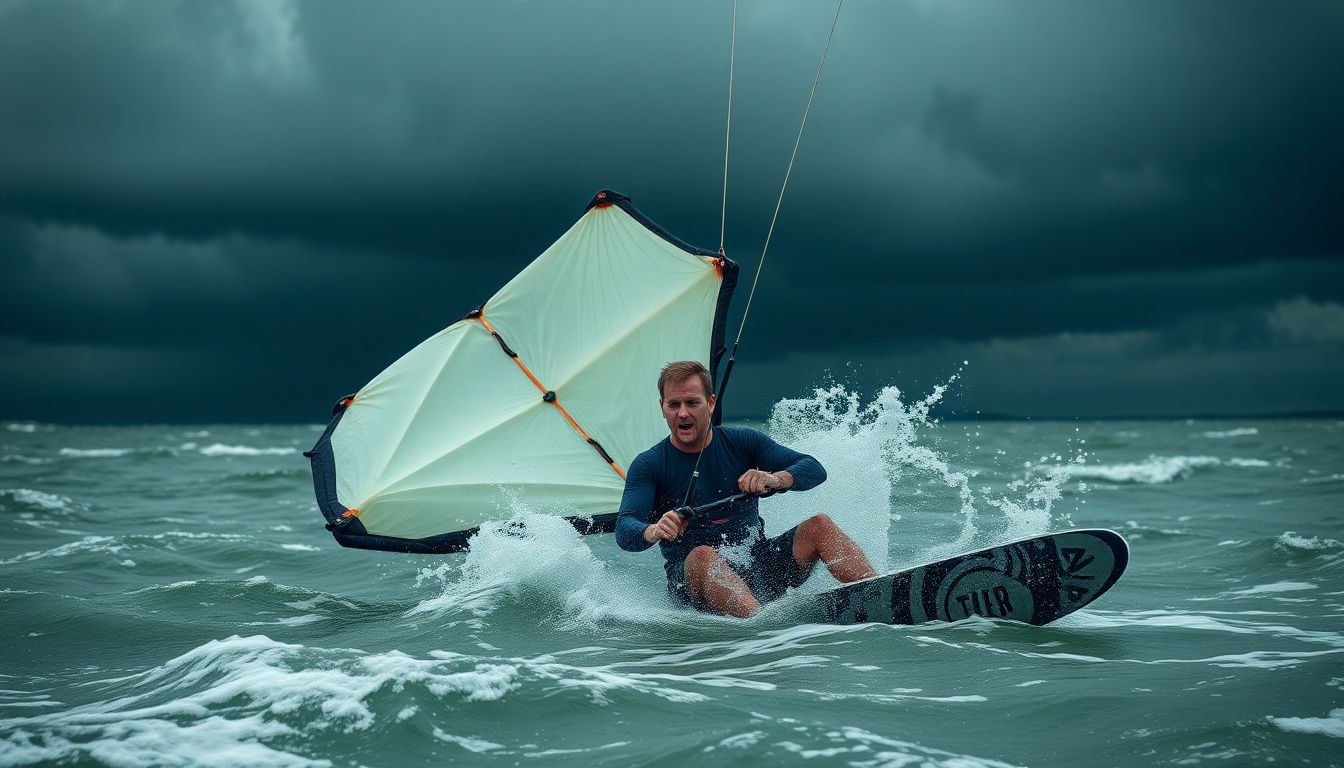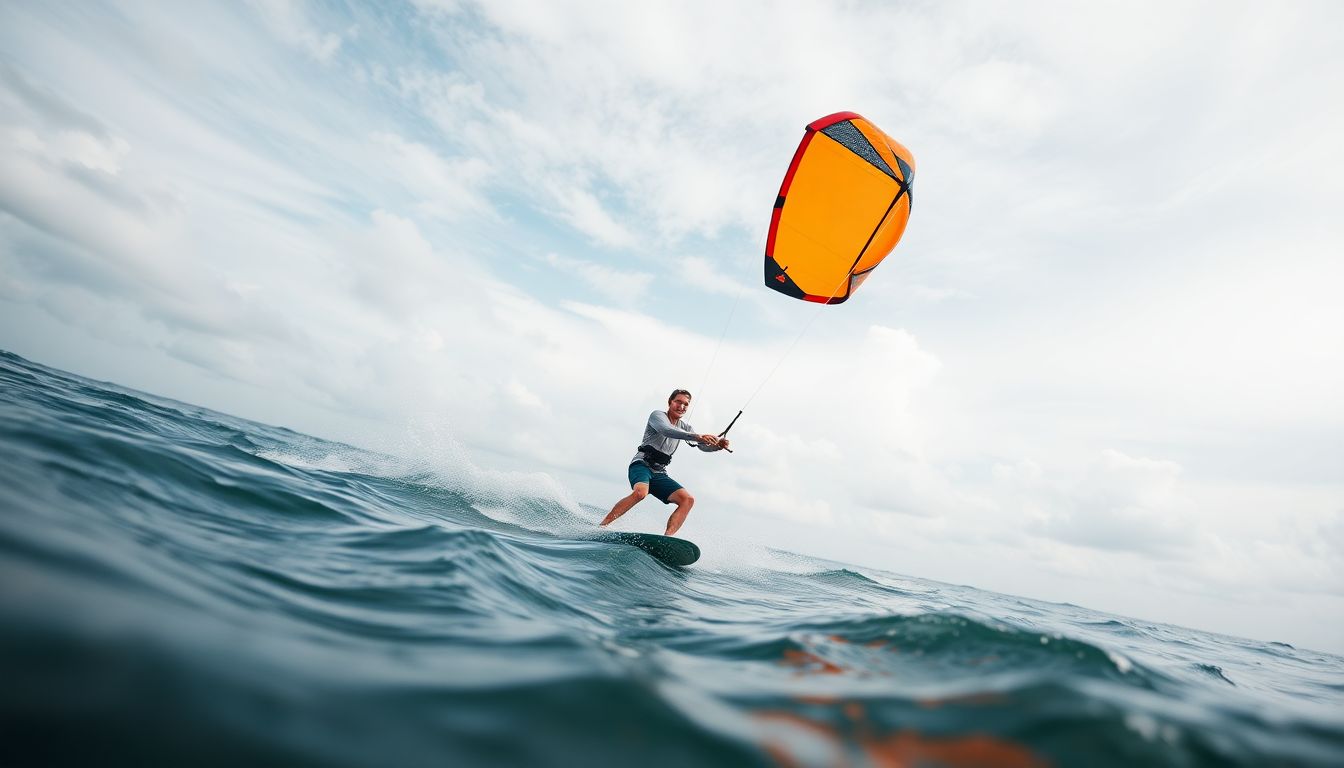Riding the waves can be thrilling, but kitesurfing comes with its own set of challenges. Understanding the mistakes that many beginners make can help ensure a much safer and enjoyable experience. With proper knowledge and skills, you can elevate your kitesurfing journey while avoiding the common pitfalls. Let’s explore some of those mistakes and learn how to dodge them.
[Also see our article: A Beginner’s Guide to Choosing the Right Kitesurfing Gear].
The Allure and Challenges of Kitesurfing
Kitesurfing blends the excitement of surfing with the thrill of flying a kite. It’s a fun and energizing outdoor activity that attracts many enthusiasts globally. However, without proper technique and safety measures, kitesurfing can be dangerous.
Statistics on Kitesurfing Injuries and Accidents
According to recent studies, accidents in kitesurfing can lead to serious injuries, with reports indicating a rise in emergency room visits associated with the sport. Ensuring safe practices is crucial to reducing risks.
Setting the Stage: Mastering the Basics for Safe Progression
Developing a solid foundation is essential as you progress. Knowing the following common mistakes and how to avoid them is key.
Mastering Kite Control: The Foundation of Safe Kitesurfing
Kite control is the core element of kitesurfing. Understanding wind conditions and managing kite positioning is vital for safety.
Understanding Wind Conditions and Kite Positioning
Tips for Reading Wind Patterns and Adjusting Kite Settings
- Assess the wind speed and direction before launching.
- Position your kite at the edge of the wind window to understand how it will react.
- Make small adjustments to your kite’s position to gauge how the wind affects your ride.
Avoiding Common Kite Handling Errors
Many beginners struggle with controlling their kite, which leads to mishaps. A common error is failing to recognize when the wind is too strong, resulting in loss of control.
Body Positioning and Leverage: Maintaining Control
Proper Body Mechanics for Efficient Kitesurfing
Your body position greatly influences your ability to steer and balance. Keep your knees slightly bent and your weight centered over the board for optimal control.
Preventing Unwanted Kite Pulls and Crashes
One common mistake occurs when riders lean too far back, which can cause sudden kite pulls and falls. Maintaining a balanced stance helps eliminate this risk.
Water Starts and Relaunches: Smooth Transitions on the Water
Water starts and kite relaunches can be tricky moments for new kitesurfers.
The Art of the Water Start: Avoiding Common Pitfalls
Step-by-Step Guide to a Clean Water Start
- Position the kite at 45 degrees.
- Keep your feet positioned correctly on the board.
- Lean forward as you pull the kite upwards.
Troubleshooting Common Water Start Problems
If struggling to get up, check the kite’s position and your body alignment. A common mistake is having the kite too high in the wind window, which can hinder your start.
Efficient Kite Relaunches: Getting Back Up and Riding
Techniques for Relaunching in Various Wind Conditions
To relaunch your kite, pull on the back line while keeping it low in the wind window. Use consistent steady pulls to bring the kite back up.
Avoiding Common Relaunch Mistakes
Avoid panic when your kite lands in the water. Taking a deep breath and assessing the situation will lead to better decision-making.

Safety Procedures and Emergency Protocols: Preparing for the Unexpected
Safety gear and procedures can save lives.
Understanding Kitesurfing Safety Gear: Importance and Usage
Essential Gear Checklist for Safe Kitesurfing
- Kite and board
- Harness
- Life vest
- Helmet
- Safety leash
Proper Use and Maintenance of Safety Gear
Regularly check gear for wear and tear. Ensure that your helmet fits snugly and that your life vest is properly fastened.
Emergency Procedures and Self-Rescue Techniques
Step-by-Step Guide to Self-Rescue Techniques
- Identify a safe spot away from other surfers.
- Disconnect your leash to get rid of excess pull.
- Use your board to help float while signaling for assistance.
When to Seek Assistance and Emergency Protocols
Recognizing when you’re in over your head is crucial. If you’re unable to manage your kite or board, seek help.
Understanding and Respecting Your Environment: Responsible Kitesurfing
Respect for your environment is part of being a responsible kitesurfer.
Navigating Crowded Waters and Right-of-Way
Rules of Kitesurfing Etiquette and Safety
Always give others space. It’s important to respect right-of-way rules to avoid collisions.
Avoiding Collisions and Maintaining Safe Distances
Practice awareness of others on the water, adjusting your speed and direction as needed to avoid accidents.
Environmental Awareness and Sustainability
Minimizing Your Environmental Impact While Kitesurfing
Leave no trace by cleaning up any litter. Use eco-friendly equipment where possible.
Respecting Marine Life and Protecting the Ecosystem
Be conscious of wildlife. Avoid areas with marine life and be cautious around nesting sites.
Progression and Skill Development: Gradual Advancement and Patience
Not all progress needs to happen quickly.
Setting Realistic Goals and Avoiding Overconfidence
Gradual Progression in Kitesurfing: Importance of Patience
Celebrate small victories! Rushing into advanced techniques can lead to failure and injury.
Common Mistakes Due to Overconfidence
Many riders jump into challenging maneuvers too soon, resulting in accidents. Take time to master the basics before moving on.
Seeking Professional Instruction and Guidance
Benefits of Kitesurfing Lessons and Coaching
Consider taking lessons from experienced instructors. They provide valuable insights and feedback that can enhance your skills.
Importance of Regular Practice and Skill Refinement
Consistent practice solidifies your skills, making you a more proficient kitesurfer.
Conclusion: Ride Safe, Ride Smart, Ride Often
Kitesurfing can be one of the most exhilarating experiences when approached with care and knowledge.
Key Takeaways and Best Practices for Safe Kitesurfing
- Master kite control early on.
- Understand the importance of safety gear.
- Always respect others and the environment.
Resources for Further Learning and Improvement
Explore local kitesurfing schools and online tutorials to continue your learning journey. For more see here.
Encouraging Responsible and Enjoyable Kitesurfing Experiences
Keep learning and pushing your limits responsibly. The waves await you!








